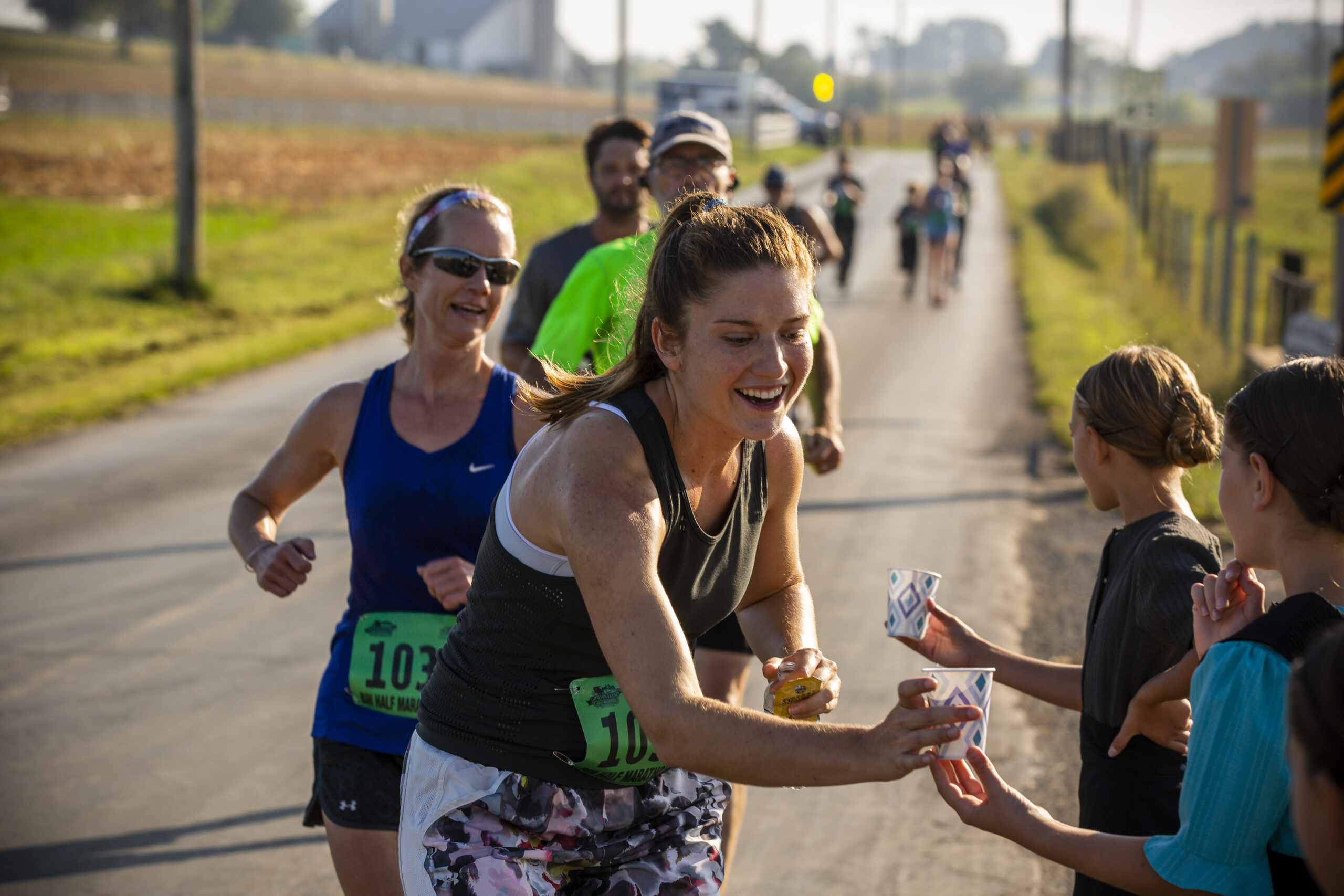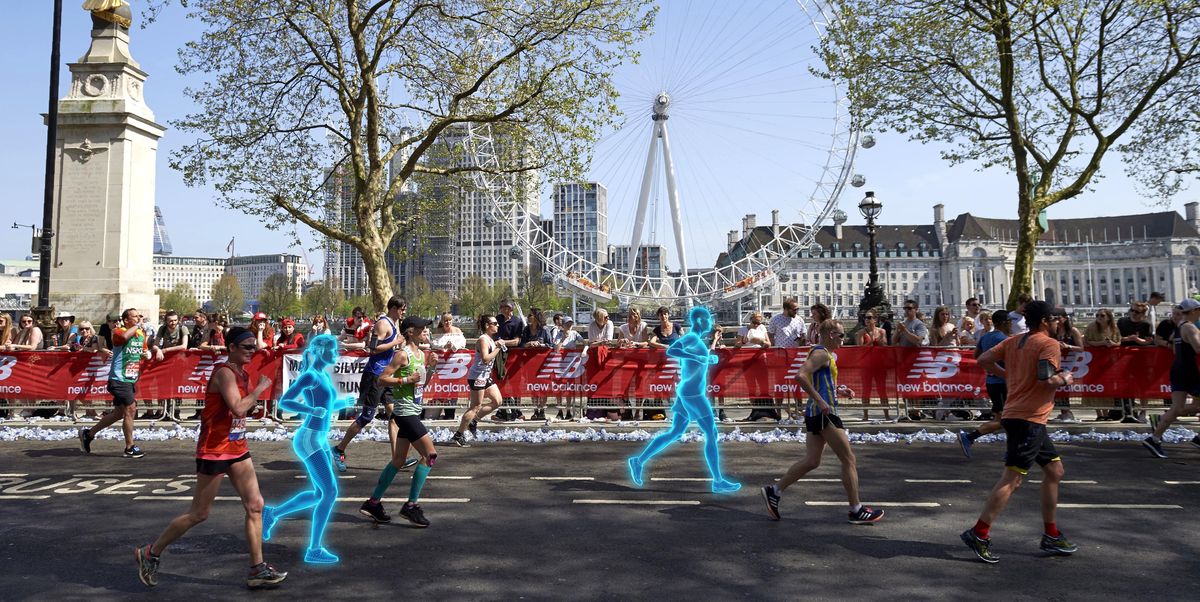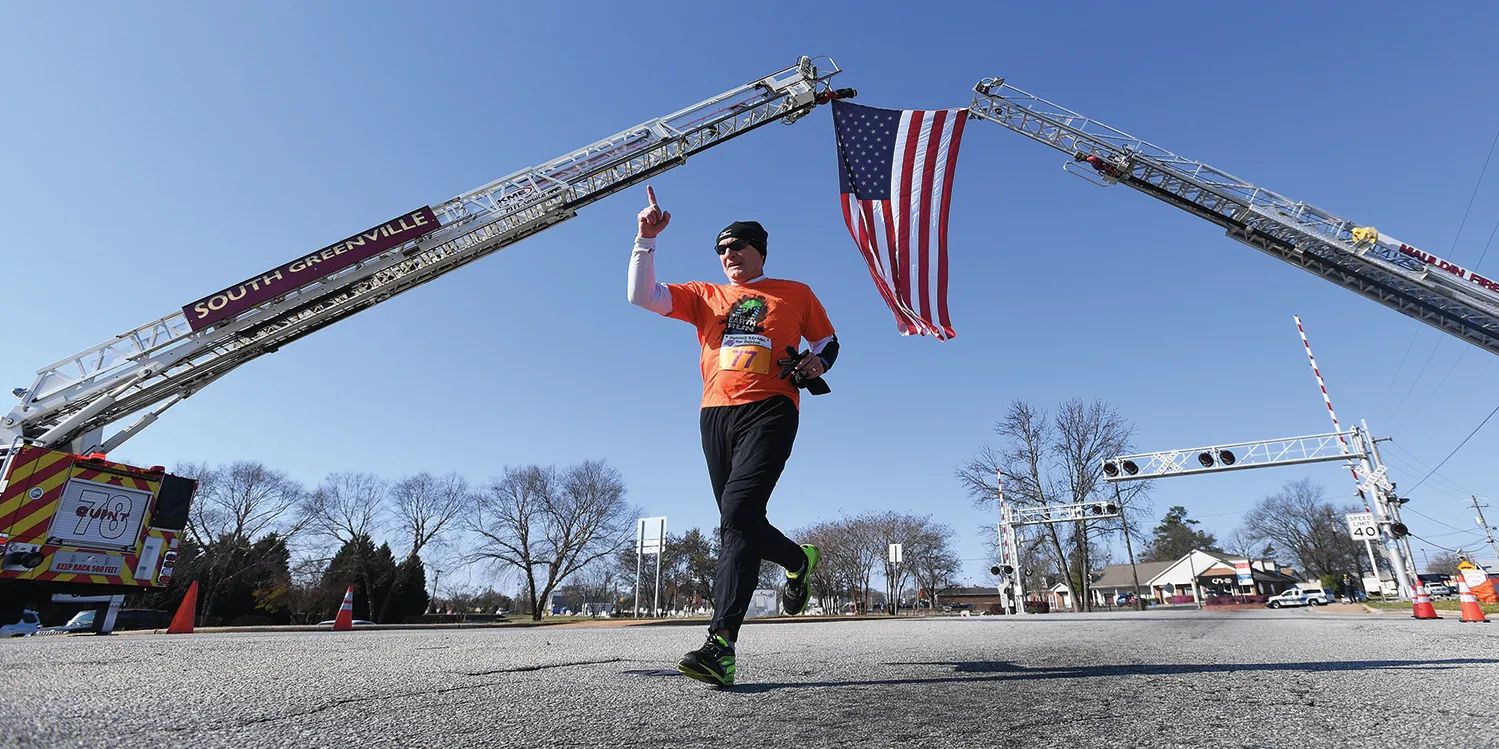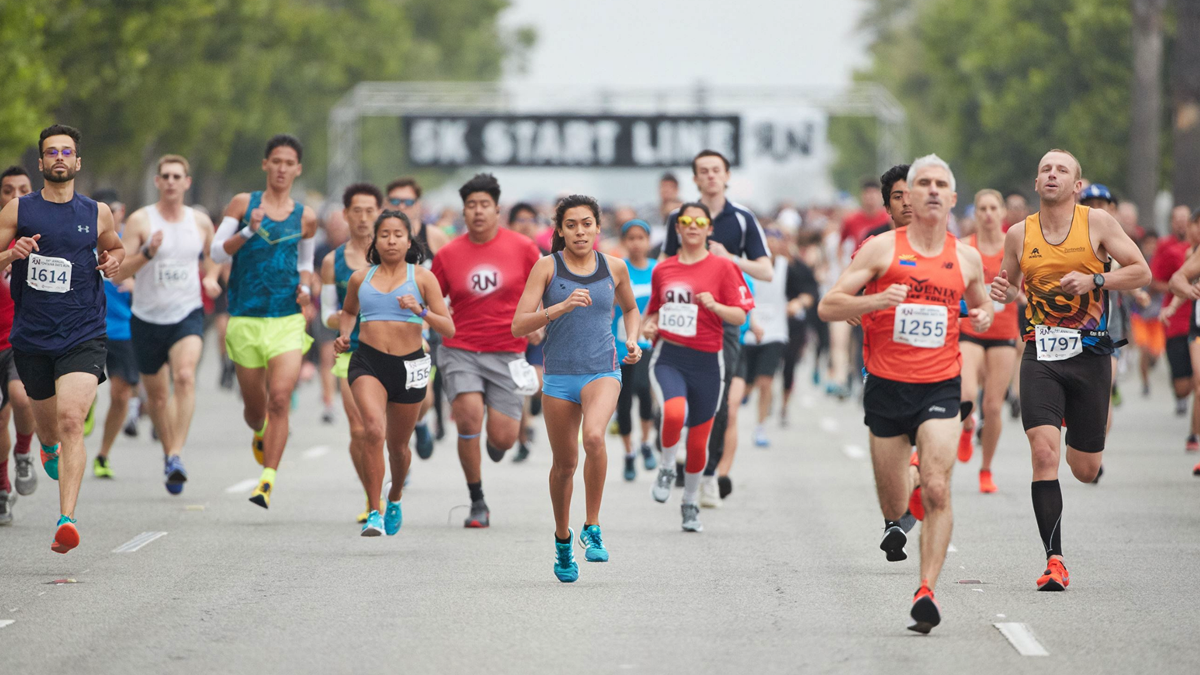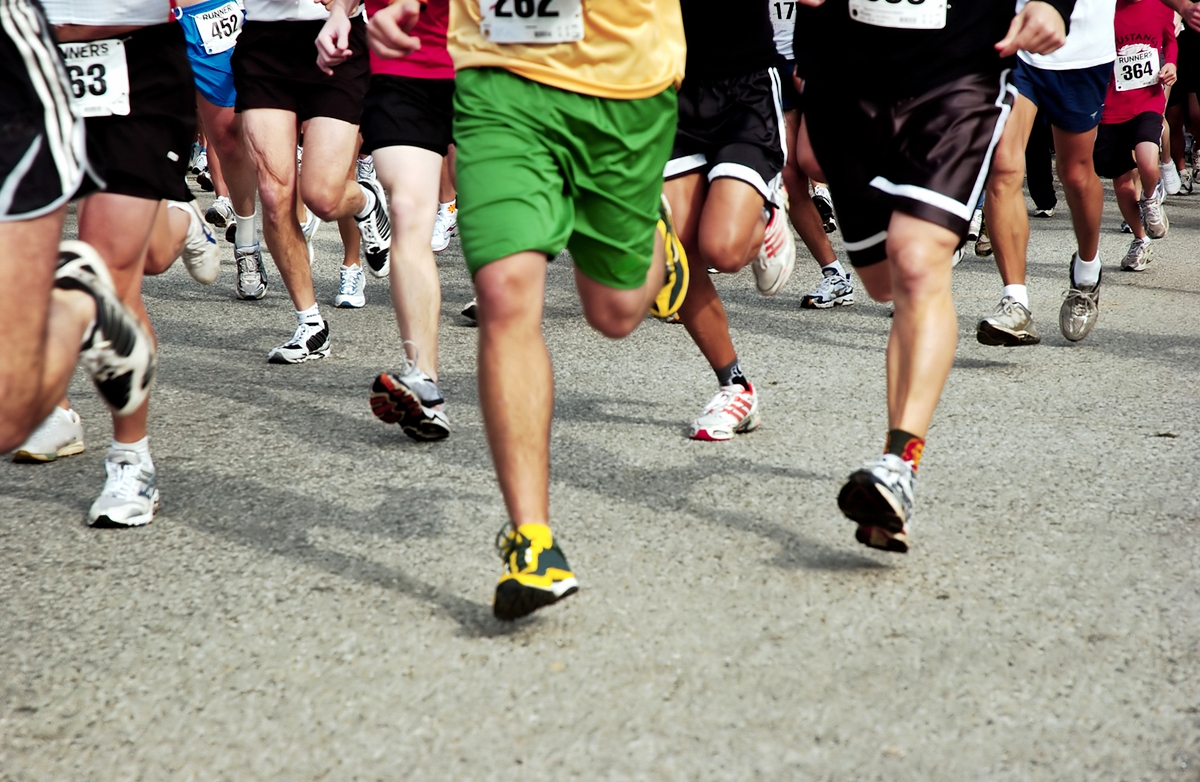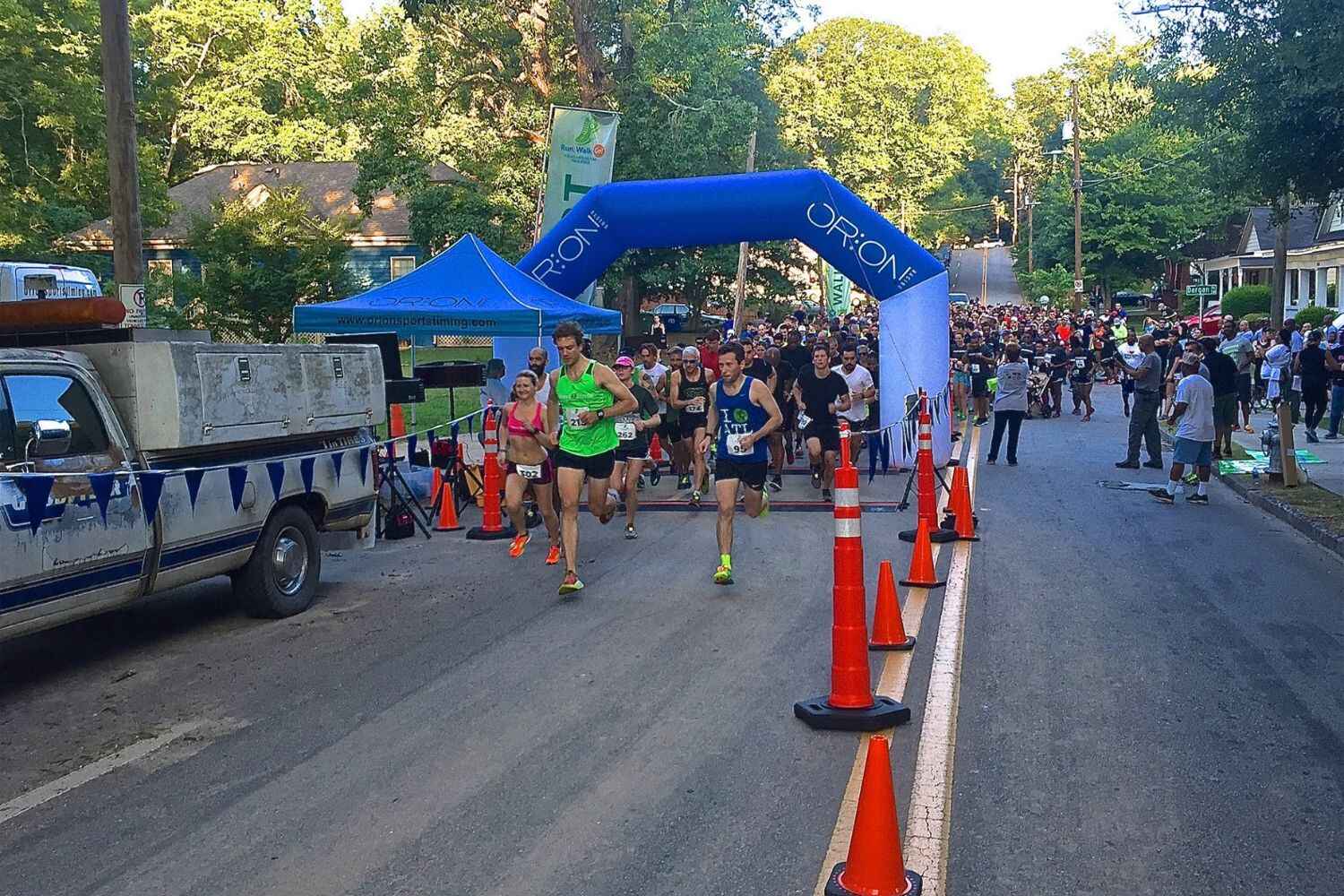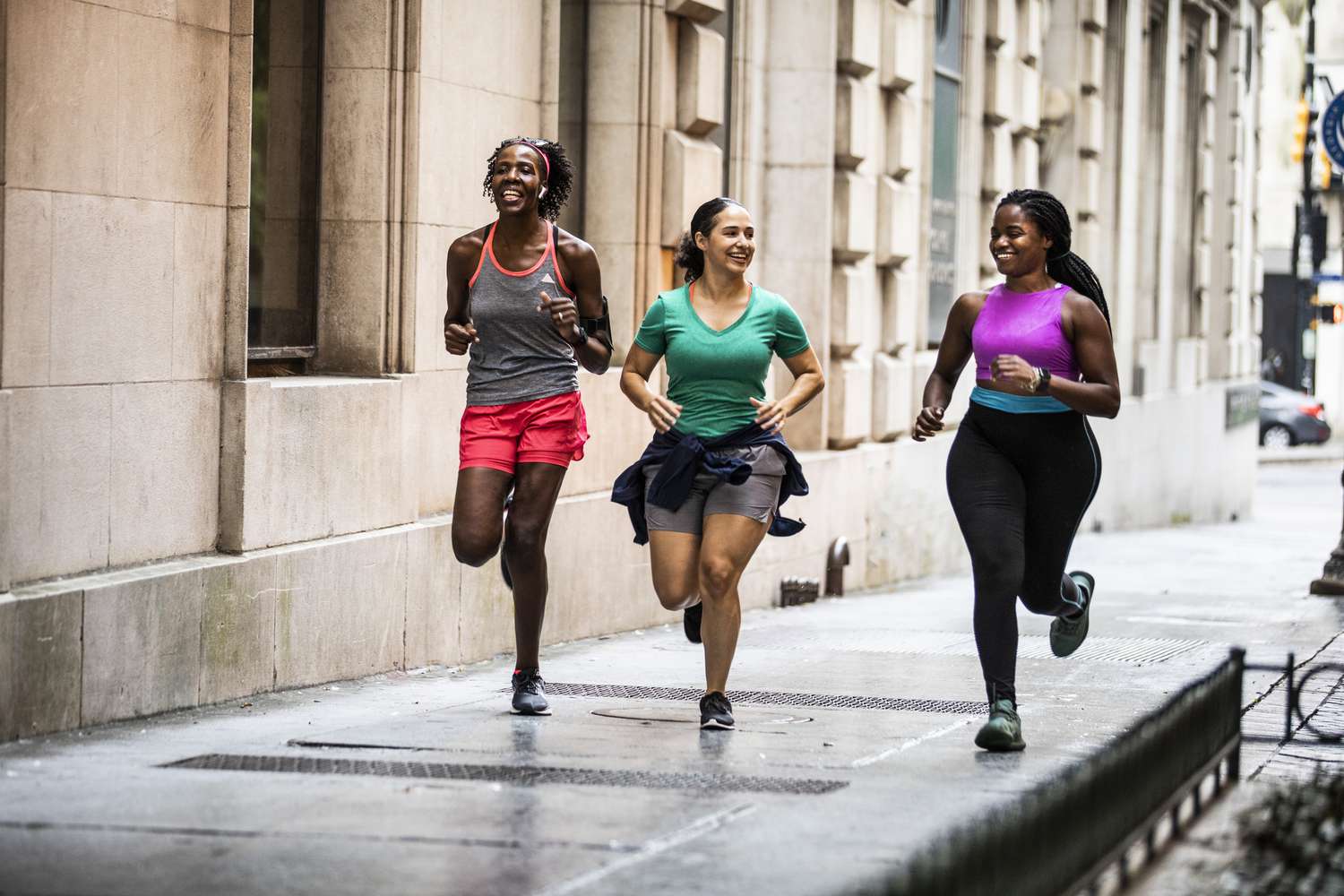Home>Misc>Featured>How To Prepare The Night Before For A 5K Run
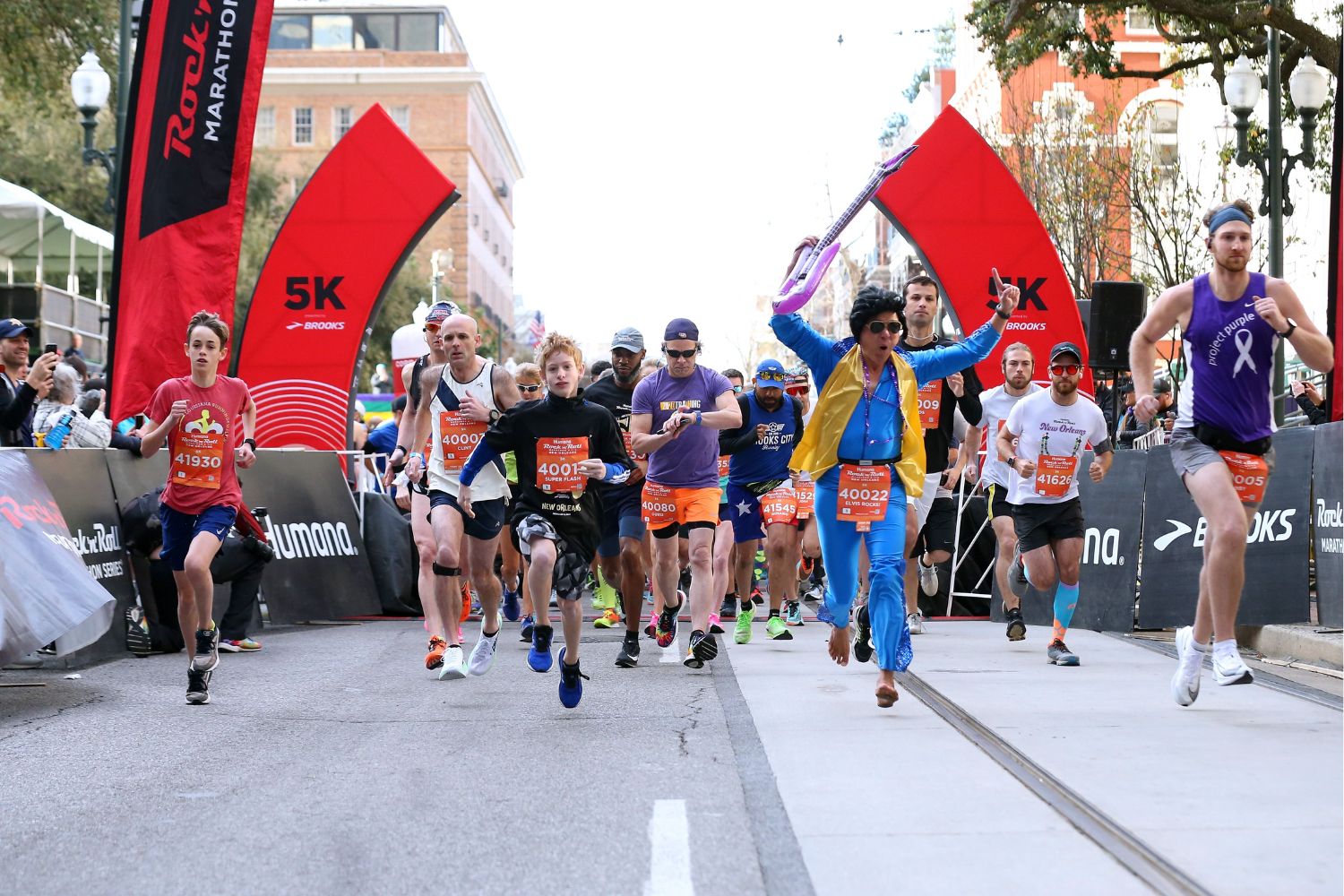

Featured
How To Prepare The Night Before For A 5K Run
Modified: October 24, 2023
Get ready for your featured 5K run with these essential tips to prepare the night before. Maximize your performance and set yourself up for success!
Introduction
Welcome to the world of running! Whether you are a seasoned athlete or just starting out, participating in a 5K run can be an exhilarating and rewarding experience. However, to make the most of this challenge, proper preparation is key. Good preparation not only helps you perform better on race day but also reduces the risk of injury and ensures an enjoyable experience.
In this article, we will guide you on how to effectively prepare the night before a 5K run. From setting goals and choosing the right gear to fueling your body and getting a good night’s sleep, we will cover all the essential aspects that will help you maximize your performance.
Preparing the night before a race is crucial as it sets the foundation for your performance. It eliminates last-minute stress and allows you to focus on what really matters – giving your best effort on the course.
So, if you’re ready to take your running to the next level and have an unforgettable 5K experience, let’s dive into the important steps you need to take the night before the race.
Importance of Preparation
Preparing properly for a 5K run is essential for several reasons. Firstly, it helps to prevent injuries and ensures that you are physically ready to tackle the race. By following a well-structured preparation plan, you can gradually build up your endurance, strength, and speed, minimizing the risk of strains, sprains, and other running-related injuries.
Secondly, preparation allows you to set realistic goals for the race. By assessing your current fitness level and understanding the demands of the race, you can establish attainable objectives that push you to achieve your personal best. This goal-setting process provides a sense of purpose and motivation, helping to keep you focused and committed throughout your training and the race itself.
Preparation also plays a crucial role in mental readiness. Running a 5K requires determination and mental fortitude, especially when faced with challenges on the course. By engaging in a comprehensive preparation routine, such as visualization, positive self-talk, and mental exercises, you can develop the mental resilience needed to overcome any obstacles during the race.
Furthermore, preparation allows you to choose the right gear for the race. Running in comfortable and properly fitted shoes is essential for preventing blisters and maintaining proper foot alignment, reducing the risk of injury. Additionally, selecting appropriate clothing that suits the weather conditions can have a significant impact on your comfort and performance.
Lastly, preparation ensures that you are fueled and hydrated properly for the race. Proper nutrition and hydration play a vital role in optimizing your performance. By consuming a balanced meal the night before and having a light meal or snack a few hours before the race, you can provide your body with the necessary energy to sustain you throughout the 5K. Staying hydrated before, during, and after the race is also crucial for maintaining performance, preventing cramping, and promoting overall well-being.
Overall, the importance of preparation for a 5K run cannot be overstated. It is the foundation for a successful race and helps to reduce the risk of injuries, set achievable goals, strengthen mental resilience, choose the right gear, and ensure proper nutrition and hydration. By dedicating time and effort to prepare adequately, you are setting yourself up for a confident and enjoyable race day experience.
Setting Goals for the Race
Setting goals for your 5K race is an important step in your preparation process. Having clear and attainable goals provides direction, motivation, and focus throughout your training and on race day.
Before setting your goals, it’s important to assess your current fitness level and understand the nature of the 5K race you will be participating in. This will help you set realistic and achievable objectives that will challenge you without overwhelming you.
When setting goals, consider both your performance goals and your personal goals. Performance goals can include improving your personal best time, aiming to finish within a certain time range, or even placing in your age group. Personal goals, on the other hand, can focus on the enjoyment of the race, finishing strong, or simply completing the race without walking.
Make your goals specific, measurable, attainable, relevant, and time-bound (SMART). For example, instead of saying “I want to finish the race,” a SMART goal could be “I want to finish the 5K in under 30 minutes.” This way, you have a clear target to work towards.
It is also beneficial to break your goals down into shorter-term milestones. For example, if your ultimate goal is to finish the race in under 30 minutes, set weekly targets to gradually improve your pace and endurance.
Setting goals not only helps you stay motivated but also provides a benchmark for evaluating your progress. Throughout your training, regularly assess your performance to determine if you are on track to achieving your goals. If necessary, adjust your goals to remain challenging yet attainable.
Remember, everyone’s goals will be different, and that’s perfectly fine. Your goals should be based on your own abilities, preferences, and aspirations. Don’t compare your goals to others or feel pressured to achieve certain benchmarks. The most important thing is to have goals that inspire and motivate you personally.
By setting clear and realistic goals for your 5K race, you can stay focused and driven throughout your training and on race day. Whether you’re aiming for a personal best time or simply want to enjoy the experience, having goals in place will enhance your overall preparation and contribute to a fulfilling race day.
Choosing the Right Gear
Choosing the right gear for your 5K run is essential for a comfortable and successful race. The right gear can enhance your performance, reduce the risk of injuries, and make your overall running experience more enjoyable.
First and foremost, invest in a pair of high-quality running shoes. Your shoes should provide proper support, cushioning, and stability to protect your feet, ankles, and knees from impact. Visit a specialty running store, where experts can analyze your gait and help you find the perfect pair of shoes that suits your unique needs.
In addition to shoes, wearing moisture-wicking and breathable clothing is crucial to keep you comfortable throughout the race. Opt for lightweight and sweat-wicking materials that will help regulate your body temperature and prevent chafing. Consider the weather conditions on race day and dress accordingly, layering up or down to ensure optimal comfort.
Investing in a good sports bra for women is also crucial to provide proper support and minimize discomfort during the race. Look for one that offers the right level of support for your activity level and body type.
Don’t forget about socks! Choose moisture-wicking socks that fit well and provide cushioning to prevent blisters. Avoid cotton socks, as they tend to hold moisture and can cause discomfort and blisters.
Another important gear consideration is a GPS watch or a running app on your smartphone. This enables you to track your distance, pace, and time, which can be valuable feedback for monitoring your progress and achieving your goals.
If you plan to run in low-light conditions, such as early morning or evening, it’s essential to wear reflective gear or carry a light source to ensure your visibility to drivers and other runners.
Ultimately, the gear you choose should be comfortable, appropriate for the weather conditions, and enhance your performance. Test out your gear during your training runs to ensure that it fits well, does not cause any discomfort, and allows for a full range of movement.
Remember, each runner is unique, and what works for someone else may not work for you. Experiment with different brands and styles to find the gear that feels the most comfortable and suits your individual needs.
By carefully selecting the right gear for your 5K run, you will set yourself up for a more enjoyable and successful race day experience. Prioritize comfort, functionality, and performance-enhancing features to ensure that your gear supports your goals and helps you perform at your best.
Hydration and Nutrition
Proper hydration and nutrition are vital components of your 5K race day preparation. The food and fluids you consume leading up to the race can have a significant impact on your energy levels, performance, and overall experience.
Hydration is essential for maintaining optimal performance and preventing dehydration. Start hydrating well in advance of the race day by increasing your water intake in the days leading up to it. During the 24 hours before the race, aim to drink at least 8-10 cups (64-80 ounces) of water to ensure that you are adequately hydrated.
On race day, continue to drink water before and during the event. Carry a water bottle or use hydration stations along the course to replenish fluids as needed, especially if the weather is hot or humid. It is also a good idea to avoid excessive caffeine and alcohol, as they can have a diuretic effect and contribute to dehydration.
Nutrition plays a crucial role in fueling your body for the race. The night before the race, consume a balanced and easily digestible meal that includes carbohydrates, such as pasta, rice, or potatoes, along with lean protein and vegetables. Avoid heavy, greasy, or spicy foods that may cause digestive discomfort during the race.
On the morning of the race, have a light breakfast or snack that is rich in carbohydrates and low in fat. This can include items like toast with peanut butter, a banana, or a small bowl of oatmeal. Give yourself enough time to eat and digest your pre-race meal, typically 1-2 hours before the start time.
During the race, you may consider consuming energy gels, sports drinks, or snacks like bananas or energy bars to provide an additional boost of carbohydrates and electrolytes. Experiment with different products during your training runs to see what works best for you.
After the race, replenish your body with a post-race meal that combines carbohydrates for energy replenishment and protein for muscle recovery. This can include options such as a turkey sandwich, a protein shake, or a balanced meal with lean protein, whole grains, and vegetables.
It’s important to note that everyone’s nutritional needs are different, and what works for one person may not work for another. It’s recommended to consult with a registered dietitian or nutritionist to develop an individualized plan that meets your specific dietary requirements and race goals.
By prioritizing proper hydration and nutrition, you are giving your body the fuel and support it needs to perform at its best during the 5K race. Remember to listen to your body, experiment with different hydration and nutrition strategies during your training, and find what works best for you.
Stretching and Warm-up Routine
Proper stretching and warming up before a 5K run is essential for preparing your muscles and joints, preventing injuries, and improving overall performance. Incorporating a pre-run routine that includes dynamic stretches and a warm-up will help prepare your body for the demands of the race.
Start with a light cardiovascular warm-up to increase blood flow and raise your heart rate. This can include a brisk walk or jog for 5-10 minutes. Gradually increase your pace to gradually elevate your heart rate and warm up your muscles.
After the warm-up, it’s time to incorporate dynamic stretches. Dynamic stretching involves moving your joints and muscles through a full range of motion, activating the muscles you’ll be using during the run. Examples of dynamic stretches include leg swings, walking lunges, high knees, and arm circles.
Focus on stretching major muscle groups, such as your quads, hamstrings, calves, hips, and shoulders. Perform each stretch for about 10-15 seconds and repeat 5-10 times. Remember to maintain proper form and avoid bouncing or forcing any stretches.
In addition to dynamic stretching, some runners may benefit from foam rolling or using a massage ball to release tight muscles and fascia before the run. This can help improve flexibility and reduce muscle tension, allowing for a more fluid and efficient stride.
It’s important to note that static stretching, where you hold a stretch for an extended period, is best done after the run or during your post-run cool-down. Static stretching before a race can actually decrease performance and increase the risk of injury.
During your warm-up, pay attention to any areas of tightness or discomfort. If you experience any pain or discomfort, modify or skip the stretch, and consult with a healthcare professional if needed.
Remember, everyone’s body is different, and what works for one person may not work for another. It’s important to listen to your body and develop a warm-up routine that works best for you. Experiment with different stretches and movements during your training runs to find the ones that feel beneficial and suit your body’s needs.
By incorporating a proper stretching and warm-up routine into your pre-run preparation, you are priming your body for optimal performance and reducing the risk of injuries. Take the time to warm up and loosen your muscles, making sure you’re physically ready for the 5K challenge ahead.
Getting a Good Night’s Sleep
Adequate sleep is crucial for optimal performance and recovery, especially the night before a 5K run. It’s during sleep that your body repairs and rejuvenates, allowing you to wake up feeling refreshed and ready to tackle the race.
Establish a consistent sleep routine leading up to race day. Aim for 7-9 hours of uninterrupted sleep each night to ensure that you are well-rested. Avoid the temptation to stay up late or engage in stimulating activities close to bedtime.
Create a sleep-friendly environment in your bedroom. Keep the room cool, dark, and quiet to promote a restful sleep. Consider using earplugs, an eye mask, or white noise machines to eliminate any distractions that may disrupt your sleep.
Develop a relaxing bedtime routine to signal your body that it’s time to wind down. This can involve activities such as reading a book, taking a warm bath, practicing relaxation techniques like deep breathing or meditation, or listening to calming music.
Avoid consuming caffeine or alcohol in the evening, as they can interfere with your ability to fall asleep and disrupt the quality of your sleep. Additionally, limit your intake of fluids close to bedtime to avoid frequent bathroom trips throughout the night.
Power down your electronic devices, such as smartphones, tablets, and laptops, at least an hour before bed. The blue light emitted by these devices can interfere with your sleep cycle. Instead, engage in relaxing activities that promote restful sleep.
If you find yourself feeling anxious or restless the night before the race, try writing down your thoughts or concerns in a journal. This can help offload any racing thoughts and allow you to relax and clear your mind before going to sleep.
Lastly, if you’re traveling for the race, be sure to plan ahead and ensure that your accommodations provide a comfortable and quiet sleep environment. If possible, try to arrive a day or two early to adjust to the new surroundings and time zone if necessary.
By prioritizing a good night’s sleep, you give your body the opportunity to recharge and optimize its performance for the 5K race. Make sleep a crucial part of your race day preparation, and you’ll be setting yourself up for success on the starting line.
Organizing Race-Day Essentials
Having your race-day essentials organized and ready to go can significantly reduce stress and ensure a smooth and efficient experience on the day of your 5K run. As the saying goes, “Failing to prepare is preparing to fail.” Here are some tips to help you stay organized on race day:
First and foremost, lay out your race-day outfit the night before. This includes your running shoes, socks, shorts or leggings, shirt, and any additional layers you may need based on the weather conditions. Double-check that all items are clean, in good condition, and ready to be worn.
Prepare a small bag or backpack to carry your race-day essentials. Include items such as your race bib and safety pins, any necessary identification or medical information, an extra pair of socks, sunscreen, a hat or visor, and a disposable poncho or extra layers in case of rain or cold weather.
Don’t forget to bring your hydration plan into action. Whether it’s a handheld water bottle, a hydration belt, or a hydration pack, make sure you have access to fluids during your race. Consider carrying a small snack, such as energy gels or chews, to provide a quick boost of energy if needed.
Bring a small amount of cash or a credit card in case you need to purchase additional supplies or food before or after the race. Many races have vendors or food trucks available, so having some form of payment can be convenient.
If you plan to use any electronic devices, such as a GPS watch or a music player, ensure that they are fully charged and ready to go. Consider bringing headphones if you enjoy listening to music or podcasts during your run.
Check the race website or confirmation emails for any specific instructions or requirements. Some races may require you to provide proof of registration or sign waivers before receiving your bib or timing chip. Familiarize yourself with any additional race-day logistics, such as parking, shuttle buses, or bag check areas.
Consider packing a small post-race recovery kit in your bag. Include items such as a towel, a change of clothes, recovery fuel like a protein shake or snack, and any necessary stretching or recovery tools such as a foam roller or massage ball.
Lastly, plan your race-day transportation and allow extra time to arrive at the race venue. Account for potential traffic, parking, and any last-minute preparations you may need to make. Aim to arrive at least an hour before the start time to give yourself sufficient time to check-in, warm up, and mentally prepare for the race.
By organizing your race-day essentials in advance, you can eliminate unnecessary stress and ensure that you have everything you need for a successful and enjoyable 5K run. Being prepared allows you to focus on the race itself rather than worrying about forgetting something important. So, take the time to organize your race-day essentials, and get ready to conquer the course!
Mental Preparations
Mental preparation is just as important as physical preparation when it comes to a 5K run. Developing a positive and focused mindset can help you stay motivated, overcome challenges, and perform at your best. Here are some strategies to help you mentally prepare for the race:
Visualize success: Spend some time visualizing yourself crossing the finish line strong and accomplishing your goals. Imagine how it will feel, the sights and sounds you might encounter during the race, and envision yourself staying focused and determined throughout the course.
Practice positive self-talk: Replace any negative or self-doubting thoughts with positive and empowering statements. Encourage yourself with phrases like, “I am strong,” “I can do this,” and “I am prepared.” Repeat these positive affirmations to yourself before and during the race to boost your confidence.
Manage pre-race jitters: It’s normal to feel some nervousness before a race. Embrace the excitement and channel the nervous energy into positive anticipation. Focus on your past training and the hard work you’ve put into preparing for this moment.
Set process-oriented goals: While it’s great to have time-related goals, also set goals that focus on the process rather than just the outcome. For example, focus on maintaining good form, pacing yourself evenly throughout the race, or staying mentally present during each mile. By setting process-oriented goals, you can stay engaged and focused throughout the race.
Develop a mantra: Create a short, powerful phrase that resonates with you and helps you stay mentally strong during challenging moments. Repeat this mantra to yourself when you need an extra boost of motivation or when negative thoughts arise.
Practice mindfulness and deep breathing: Incorporate mindfulness techniques such as deep breathing and focusing on the present moment. Pay attention to your breath, the sensations in your body, and the rhythm of your steps. This can help calm your mind, reduce anxiety, and enhance your overall race experience.
Stay in the present: Instead of worrying about the distance ahead, focus on one step at a time. Break the race down into smaller segments, such as mile markers, and set mini-goals for each section. By staying present, you can maintain a steady pace and prevent overwhelming yourself with thoughts of the entire race.
Embrace the discomfort: Running a 5K is challenging, both physically and mentally. Embrace the discomfort that comes with pushing yourself and remember that discomfort is temporary. Remind yourself that you are capable of surpassing your limits and that the feeling of accomplishment at the finish line will outweigh any temporary discomfort along the way.
By engaging in mental preparations before a 5K race, you can optimize your performance, enhance your focus, and stay motivated throughout the challenge. The mental aspect of running is just as important as physical conditioning, so take the time to train your mind and develop a resilient mindset that will carry you to the finish line.
Reviewing the Route
One of the key aspects of race-day preparation is reviewing and familiarizing yourself with the route of the 5K run. Knowing the course beforehand can give you a mental advantage, help you plan your strategy, and boost your confidence on race day. Here’s why reviewing the route is important and how you can do it effectively:
Know the terrain: Take the time to research the course and understand the terrain you’ll be running on. Is it predominantly flat, hilly, or a mix of both? Knowing what to expect can help you pace yourself appropriately, conserve energy for uphill sections, and push harder on downhill stretches.
Identify landmarks and aid stations: Familiarize yourself with key landmarks along the route, such as mile markers, water stations, or turnaround points. Mentally noting these landmarks can give you a sense of progress during the race and help you stay focused.
Study race maps and elevation profiles: Reviewing race maps and elevation profiles can provide a visual representation of the course. Pay attention to any challenging sections, sharp turns, or potential bottlenecks. Understanding these details can help you plan your race strategy accordingly.
Use online tools and apps: Utilize online resources and running apps that provide detailed information and interactive maps of the race course. Some apps even allow you to virtually experience the course through 3D maps or videos. Taking advantage of these tools can give you a better understanding of what to expect on race day.
Practice on the course if possible: If the race course is accessible prior to the event, consider visiting it for a practice run. This will give you firsthand experience of the terrain and allow you to familiarize yourself with any challenging sections or turns. Running on the course beforehand can boost your confidence and give you a mental advantage on race day.
Visualize running the course: Spend some time visualizing yourself running the route successfully. Envision yourself navigating each turn, conquering each hill, and finishing strong. Visualizing the race in advance will help build confidence and familiarize your mind with the course.
Strategize your race plan: After reviewing the route, use the information you’ve gathered to develop a race plan. Determine how you will approach different sections of the course, where you may need to conserve energy, and where you can push your pace. Having a strategic plan in mind can help you stay focused and make informed decisions during the race.
By reviewing the route ahead of time, you can mentally prepare yourself for the demands of the 5K run. Understanding the terrain, key landmarks, and potential challenges will give you a sense of confidence and readiness come race day. So, take the time to study the course, visualize success, and strategize your approach to ensure your best performance on the day of the race.
Final Checklist
As the race day approaches, it’s important to ensure that you have everything in order for a smooth and successful 5K run. Here’s a final checklist to help you stay organized and prepared:
- Double-check your race registration and confirmation details to ensure you have all necessary information and paperwork.
- Review the race-day schedule and plan your travel accordingly, allowing ample time to arrive and complete any pre-race requirements.
- Prepare your race-day outfit, including running shoes, socks, shorts or leggings, shirt, and any necessary accessories or layers based on the weather conditions.
- Organize your race bib, safety pins, timing chip, and any necessary identification or medical information.
- Pack a small bag or backpack with essential items such as water bottles, snacks, sunscreen, hat or visor, and any additional post-race essentials like a towel or a change of clothes.
- Ensure your electronic devices, such as GPS watch or music player, are fully charged and ready to go.
- Check the weather forecast and pack accordingly, including any rain gear or extra layers if needed.
- Prepare a pre-race meal or snack for the morning of the race, ensuring it is easily digestible and provides the necessary energy for your performance.
- Get a good night’s sleep the night before the race, following your established bedtime routine and ensuring at least 7-9 hours of rest.
- Plan your transportation to the race venue, considering parking availability, traffic, and any race-day logistics provided by the organizers.
- Stay hydrated in the days leading up to the race, and carry water or sports drink on race day to ensure proper hydration.
- Review your race goals and race strategy, reminding yourself of the commitment and hard work you’ve put into preparing for this race.
- Stay positive and mentally focused, practicing visualization and positive self-talk to boost your confidence and motivation.
By ticking off each item on this final checklist, you can approach race day with confidence and peace of mind, knowing that you have taken care of all the necessary preparations. Stay organized, trust in your training, and embrace the excitement of the 5K run waiting for you. Good luck and enjoy the race!
Conclusion
Preparing for a 5K run involves much more than simply lacing up your running shoes. It requires a comprehensive approach that includes physical training, mental preparation, and organization. By following the steps outlined in this article, you can ensure that you are well-equipped and ready for the challenge ahead.
From setting goals and choosing the right gear to hydrating properly, warming up effectively, and getting a good night’s sleep, each aspect of preparation plays a crucial role in optimizing your performance and enjoyment of the race.
Remember that preparation is a personal journey, and what works for one runner may not work for another. It’s important to listen to your body, experiment with different strategies, and find what suits you best. Pay attention to your own needs, goals, and limitations throughout your preparation process.
As you approach race day, stay positive, trust in your training, and embrace the excitement of the event. You’ve put in the hard work, and now it’s time to enjoy the experience and give it your all on the course.
Keep in mind that a 5K run is not just about reaching the finish line; it’s about challenging yourself, embracing the journey, and celebrating your accomplishments along the way. Whether it’s your first 5K or your hundredth, each race is an opportunity for personal growth and a chance to push your boundaries.
So, prepare well, stay focused, and most importantly, have fun! The 5K run is an exhilarating experience that will leave you feeling accomplished and motivated to pursue even greater challenges in the future. Lace up your shoes, take a deep breath, and get ready to conquer the course.



